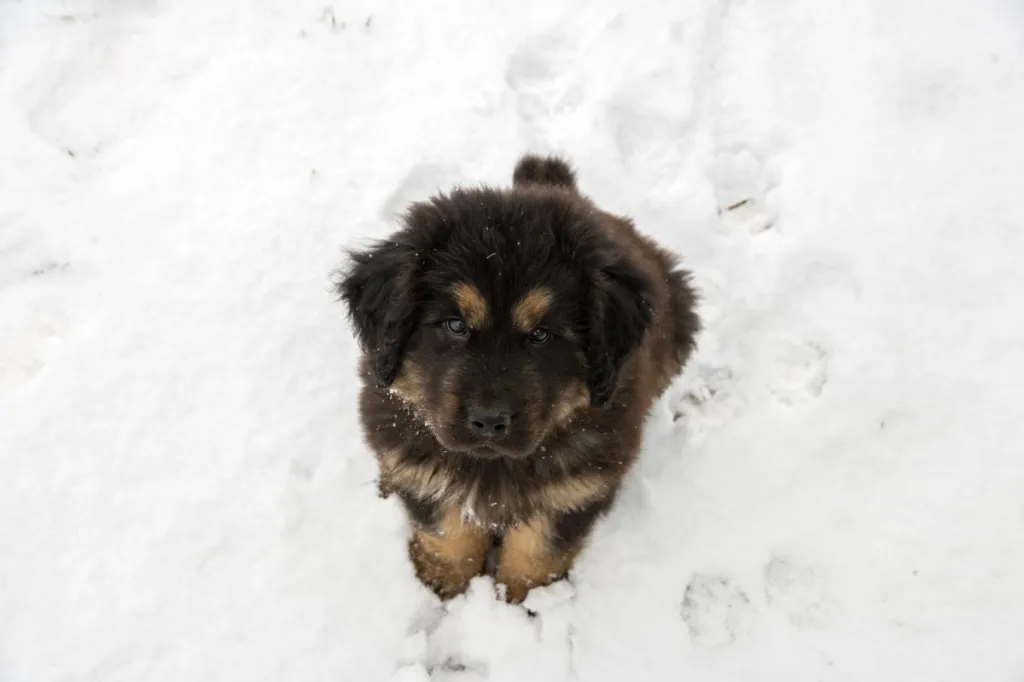The origination of Tibetan Mastiff puppies dates back centuries ago in Tibet. Humans bred them as primitive guardians in the challenging Himalayan landscape. Now, this breed has adapted to being family dogs while still maintaining their protective temperament. Despite their imposing size and bear-like appearance, these dogs are famous for their loyalty, affection, and gentle nature. If you’re thinking of getting a Tibetan Mastiff puppy or simply wish to learn more about these adorable furry friends, you’re in the right place. Explore Tibetan Mastiff puppy pictures and discover valuable information about these charming canine companions.
They grow up to be large dogs

Tibetan Mastiffs are renowned for their substantial size, with males typically ranging from 26 to 30 inches (66-76 cm) in height and weighing approximately 100 to 160 pounds (40-72 kg). Conversely, females are slightly smaller, standing between 24 to 28 inches (60-71 cm) and weighing around 75 to 125 pounds (32-54 kg). At six months, Tibetan Mastiffs reach a height of 21 to 26 inches (55-65 cm), with male puppies generally presenting with a larger stature than their female counterparts.
They are loyal protectors

Tibetan Mastiff puppies have a natural protective instinct and are famous for their unwavering loyalty to family. They can display formidable protectiveness when it concerns their loved ones. Their inherent guardian instinct runs deep, causing them to be vigilant and protective when strangers approach. However, when trusted individuals greet them, these affectionate giants willingly offer their warm embrace. Hence, their substantial size does not mean they don’t have profound love and devotion to offer.
These dogs are independent, which is why they can stay home alone for up to 8 hours. However, they do prefer canine companions. Moreover, Tibetan Mastiffs are playful. As such, they require moderate exercise of 20 to 30 minutes daily. Also of note, they are increasingly fond of winter and prefer leisurely walks over high-energy activities.
As a working breed, they focus on tasks like patrolling. A medium-sized, fenced backyard and daily walks can prevent boredom-related mischievous behavior.
Training is vital, though they may not respond well to traditional obedience methods. Since they are not food-driven, off-leash walks are discouraged due to territorial tendencies. As such, proper socialization from a young age can help with their highly protective behavior.
They were presented to Queen Victoria

The first recorded appearance of a Tibetan Mastiff occurred in 1847. Lord Hardinge, the Viceroy of India at the time, brought this breed to England and presented it as a gift to Queen Victoria. This was the beginning of the breed’s high-profile status. Subsequently, the Prince of Wales ended up owning two of these dogs, which were showcased at the Alexandra Palace Show in 1875. In addition, U.S. President Dwight D. Eisenhower received two Tibetan Mastiffs as a gift from Nepal.
They are banned in several places

Despite having a storied heritage and memorable appearance, Tibetan Mastiffs are banned in several parts of the world. Many people wrongly perceive them as aggressive and territorial, owing to their massive size. Their large stature contributed to their historical use in fighting and blood sports. Several regions in the world do not allow such activities and, as a result, have banned this breed. Furthermore, improper breeding and training practices have worsened their reputation, leading to misconceptions of constant aggressiveness and viciousness.
Countries including Ukraine, China, Germany, France, and Malaysia have banned or restricted ownership of this breed. The United States, as a whole, hasn’t outlawed owning a Tibetan Mastiff. However, they are banned in some American cities. In part, as a result of their legal status, this breed is in danger of going extinct.
They have a fluffy double coat
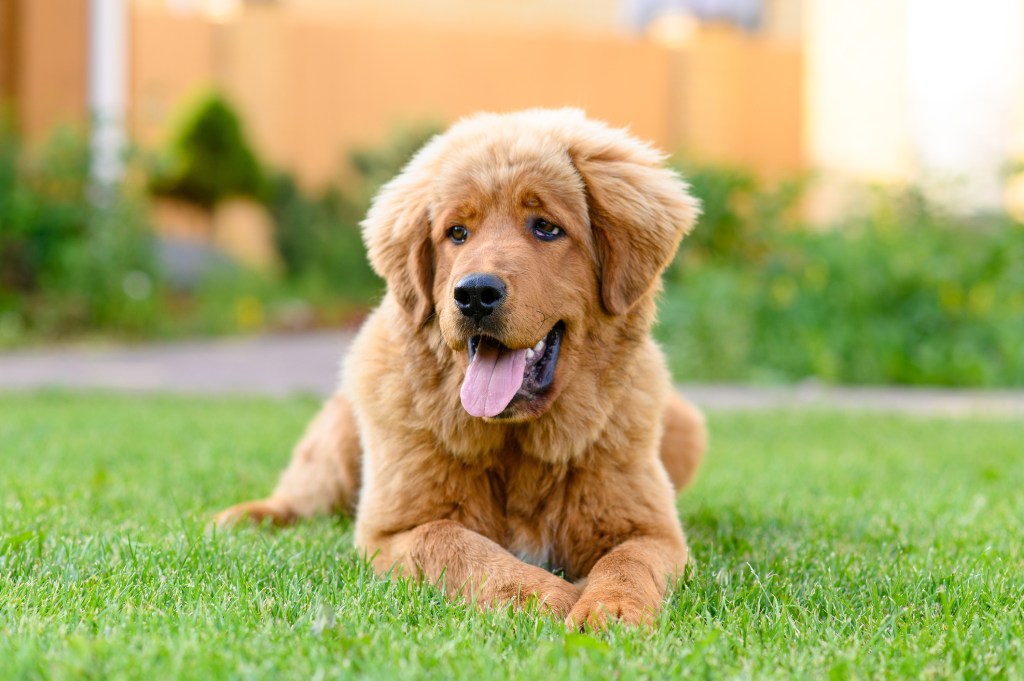
With a distinctive and plush double coat, Tibetan Mastiffs have a lion-like mane enveloping their neck and shoulders. Their topcoat has a coarse texture, while the undercoat is soft, wool-like, and heavy. The fur is neither silky nor wavy. On the contrary, it is rigid and straight.
Tibetan Mastiff puppies can have coats of various colors. Some can have black or brown coats, while others are born with gold or blue-colored coats. Moreover, these majestic dogs can also sport discernible markings on their luxurious coat. Interested owners would be happy knowing that this breed doesn’t shed a lot of hair.
Health care involves regular teeth brushing, ear checks, and monthly nail trimming to prevent infections and tears.
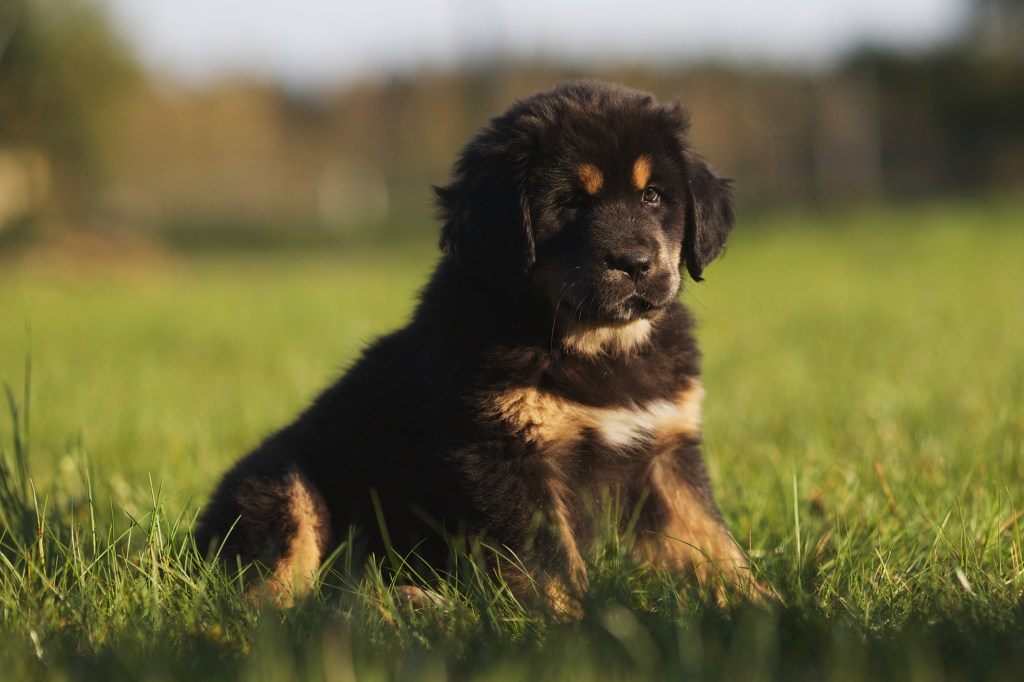
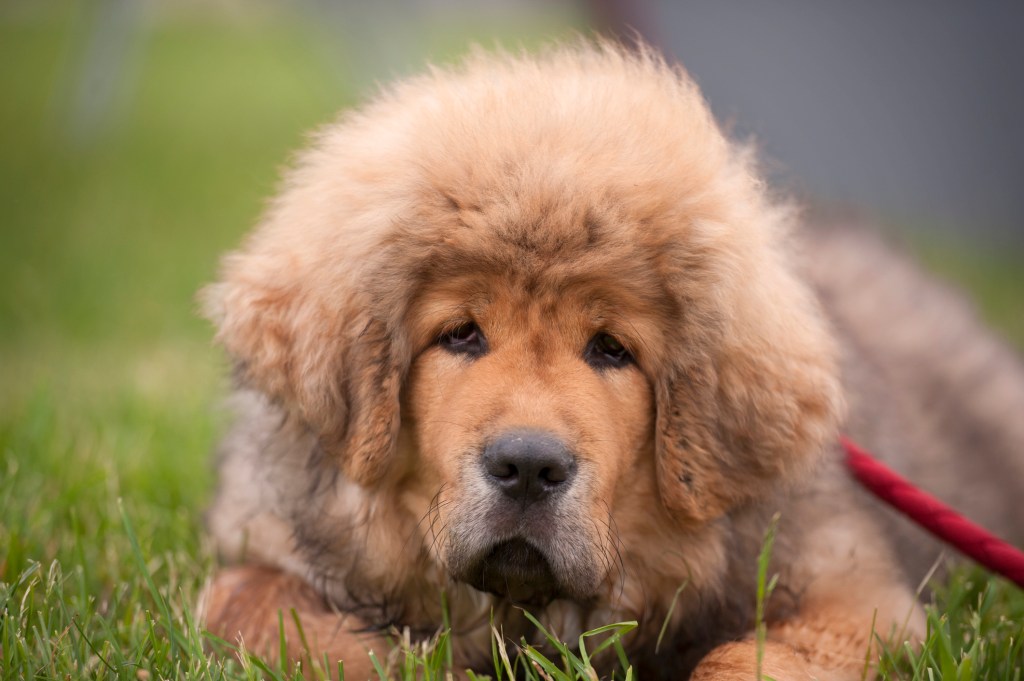
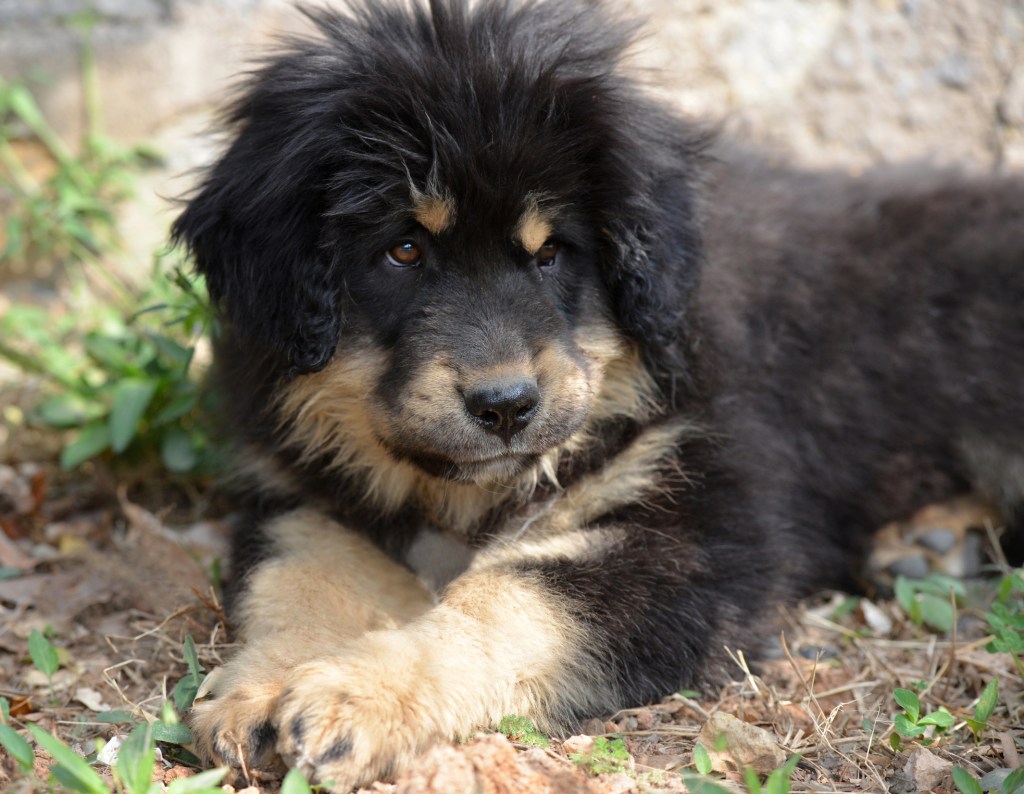
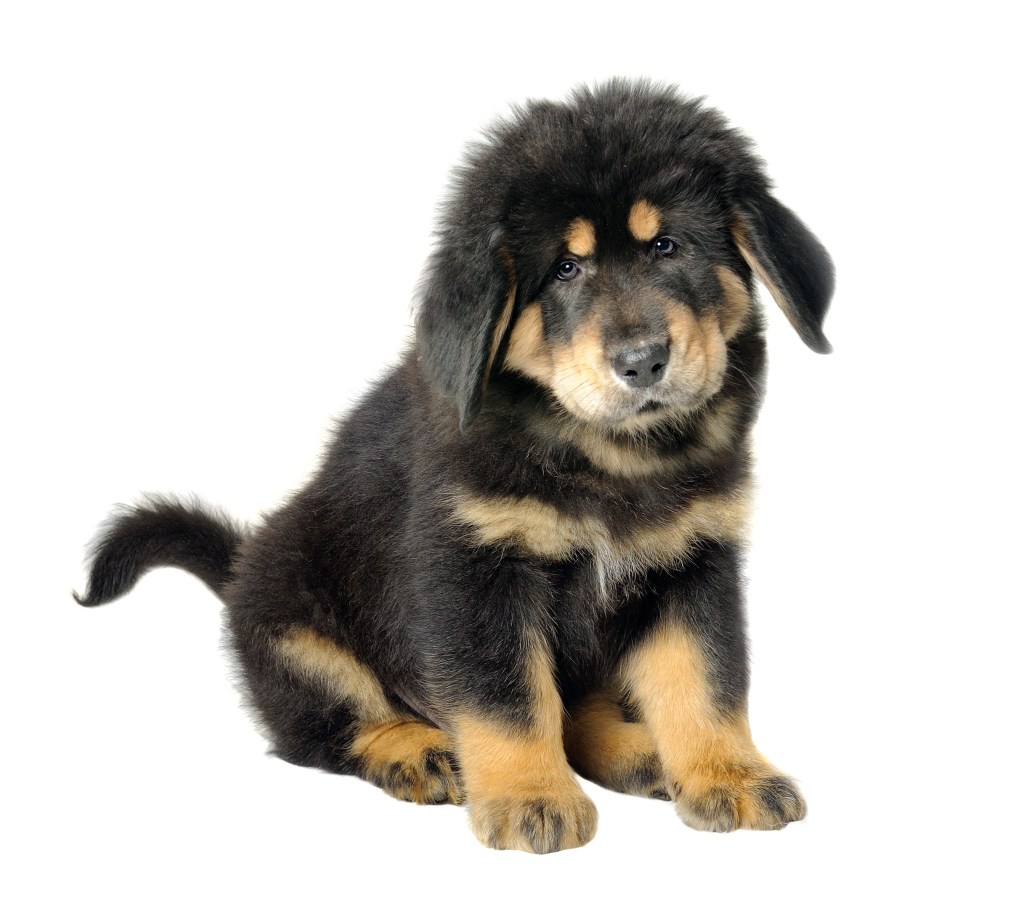
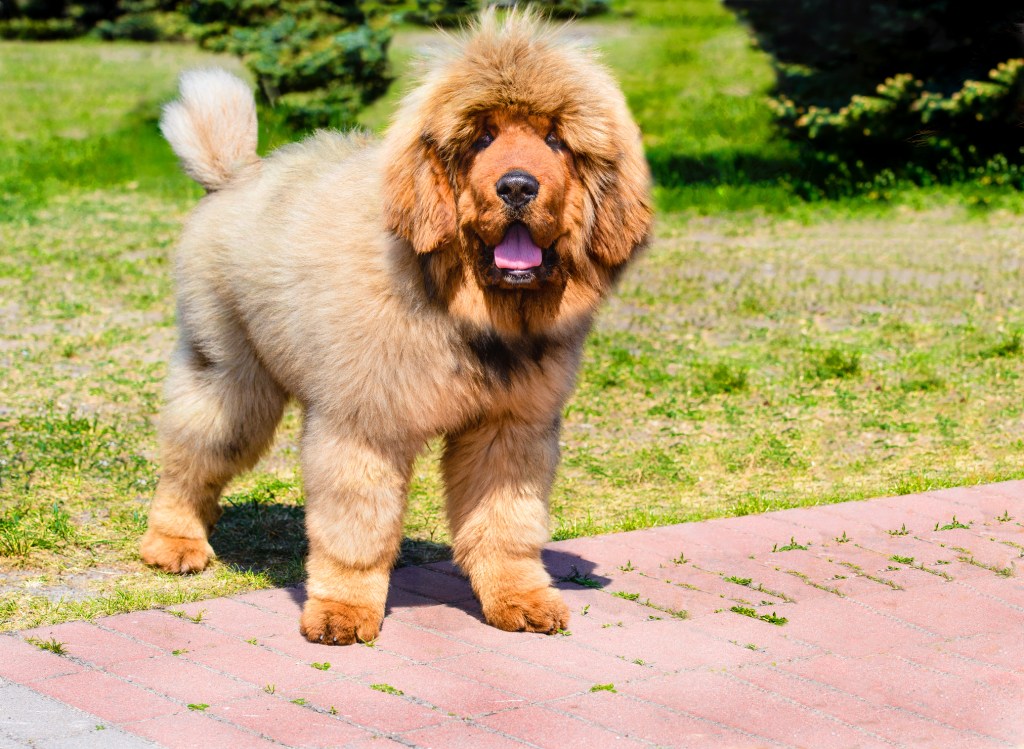
Before getting a Tibetan Mastiff puppy, check the laws in your city regarding ownership of this beautiful ancient breed. If you’re wondering how much Tibetan Mastiff puppies cost, you should know they are one of the most expensive dog breeds in the world. What’s more, they are also one of the most costly breeds to insure. That said, instead of purchasing from a breeder, you should adopt from a local shelter or rescue.
